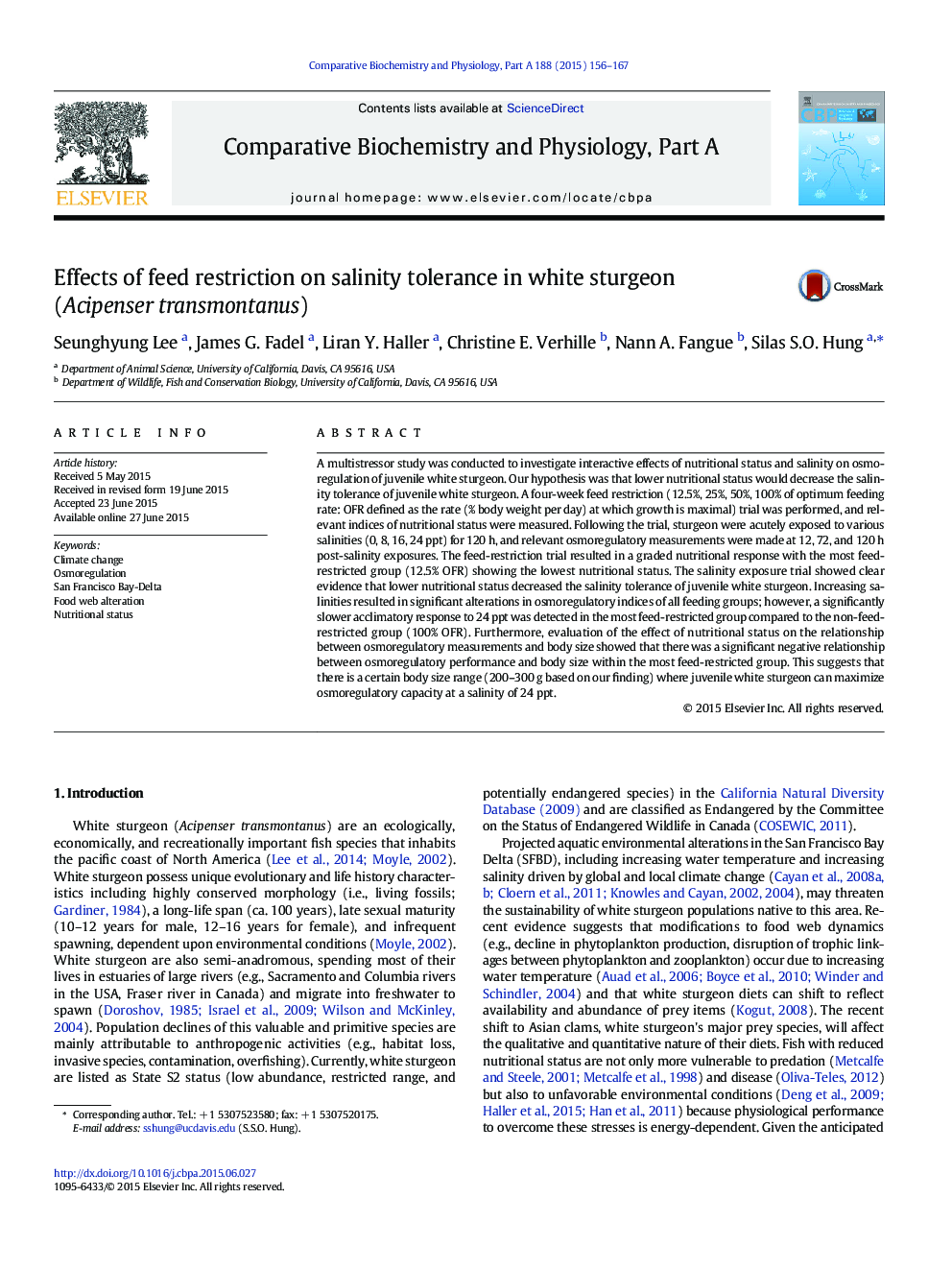| Article ID | Journal | Published Year | Pages | File Type |
|---|---|---|---|---|
| 1971926 | Comparative Biochemistry and Physiology Part A: Molecular & Integrative Physiology | 2015 | 12 Pages |
A multistressor study was conducted to investigate interactive effects of nutritional status and salinity on osmoregulation of juvenile white sturgeon. Our hypothesis was that lower nutritional status would decrease the salinity tolerance of juvenile white sturgeon. A four-week feed restriction (12.5%, 25%, 50%, 100% of optimum feeding rate: OFR defined as the rate (% body weight per day) at which growth is maximal) trial was performed, and relevant indices of nutritional status were measured. Following the trial, sturgeon were acutely exposed to various salinities (0, 8, 16, 24 ppt) for 120 h, and relevant osmoregulatory measurements were made at 12, 72, and 120 h post-salinity exposures. The feed-restriction trial resulted in a graded nutritional response with the most feed-restricted group (12.5% OFR) showing the lowest nutritional status. The salinity exposure trial showed clear evidence that lower nutritional status decreased the salinity tolerance of juvenile white sturgeon. Increasing salinities resulted in significant alterations in osmoregulatory indices of all feeding groups; however, a significantly slower acclimatory response to 24 ppt was detected in the most feed-restricted group compared to the non-feed-restricted group (100% OFR). Furthermore, evaluation of the effect of nutritional status on the relationship between osmoregulatory measurements and body size showed that there was a significant negative relationship between osmoregulatory performance and body size within the most feed-restricted group. This suggests that there is a certain body size range (200–300 g based on our finding) where juvenile white sturgeon can maximize osmoregulatory capacity at a salinity of 24 ppt.
